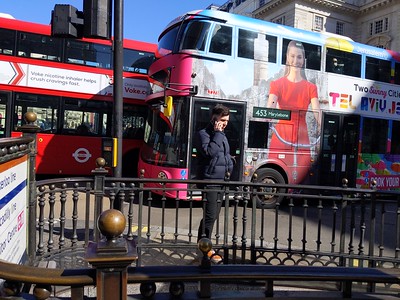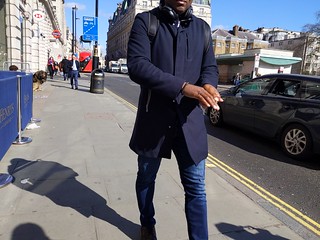I'm really glad I made it to the Dora Maar show at Tate Modern before it closes as, once again, my eyes were opened to another photographer who excelled at candid photography in the midst of social change.
Maar's story goes well beyond her trip to London in the 1930s so this work is very much a moment on her path to her better known life as a surrealist, encompassing photomontage, painting and poetry, but for me it was a fascinating example of little-known street photography - being outside the canon, obvs - that even in the few images in this show really gave me some small insight into her thoughts and motivations
The portraits in London are very much rooted in their environment. We see individual hardship in the shadow of the bricks and mortar of questionable financial probity. I hadn't seen an image of a pearly king in years and Maar's photographs really made me think of the historical representation and reality of English working class culture.

No dole - Work wanted - Lost all in business, Dora Maar, 1934

Pearly King collecting money for the Empire Day, Dora Maar, 1935
There's a mood about them, and her other photographs from the streets of France and Spain in the same period, that for me has more of an edge than the French humanist style of that time, feeling more affinity with the emerging American outsider. They reflect the social context of the times through the idiosyncratic, compassionate eyes of the photographer. Timeless in lots of ways.



